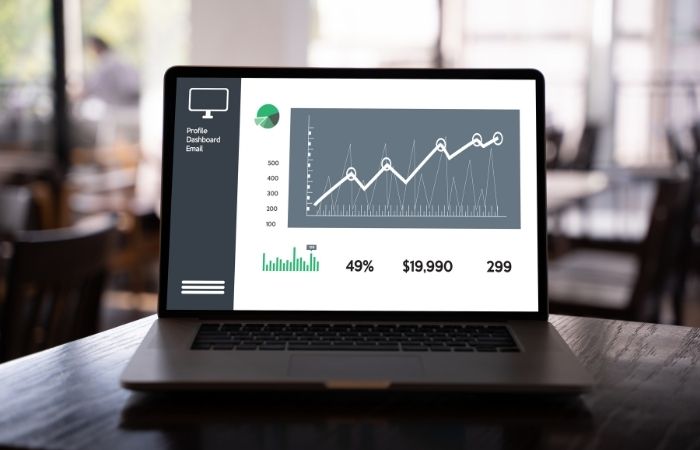One of the things that you’ll absolutely need to do when running a business is keep track of everything that’s and measure everything in order to check the progress that your company is actually making on the market. Your goal is, without a doubt, to build a successful company, and you won’t be able to do that without constantly being aware of the goals you are meeting, as well as the ones you are failing to meet. In short, you won’t have any success without actually worrying about the metrics.
For instance, if you have set certain sales goals, you need to be aware of those at all times in order to know whether you are meeting them or not. That is why you should consider investing in a dashboard that will provide you with the necessary access to all the relevant and up-to-date sales data. By having a dashboard, you will also have a much easier time checking precisely how successful your current sales strategy is and what it is that might need a bit of tweaking.
If you are now not entirely sure as to what types of dashboards I am talking about here, I can definitely understand that. You probably have a lot on your plate already and this might be something that you haven’t thought about in the past. Well, since it is undeniably time for you to start thinking about this, here is what we are going to do. In the simplest words possible, I am going to explain what a sales dashboard is and then also proceed towards giving you tips on how to create a good one for you.
What Is A Sales Dashboard?
As it is perfectly logical, we are going to start with the question of what a sales dashboard actually is. After all, there is absolutely no point in talking further about how to create one for you if you don’t have any idea as to how all of this works in the first place. I am sure that you have heard at least a few things about this concept, however, meaning that you might be familiar with it to a certain extent. Well, it is now time for you to start digging deeper for information, and you can start by reading on.
A sales dashboard is actually an app that will provide you with visual representation of your recent metrics, i.e. your recent performance. It will provide you with concise and precise information regarding the metrics related to sales by region and by date, conversion rates, sales growth and similar things. You can also track the calls that were made, the e-mails that were sent, as well as the average response time of your leads, which can certainly be highly significant.
If you’re wondering why you might need something like this in the first place, let me cut to the chase right away and tell you what you should know. Basically, if you decide to ignore sales dashboards and try and organize the data all on your own, there is a huge chance that you will practically drown in all the data in an effort to accumulate and analyze everything manually. Since this would be an exhausting task, your chances of doing it completely correctly are slim.
On top of all that, since you will have to spend so much time focusing on gathering everything manually, you will probably neglect some other parts of your business, which is certainly not a good move. To put it as simply as possible, you need to rely on sales dashboards to organize your recent metrics into understandable and visual graphics because that will help you save time, reduce the possibility of human error and basically increase your revenue. There’s no doubt in my mind that increasing your revenue sounds like quite an appealing goal.
How To Create One?
Anyway, now that you know precisely what a sales dashboard is and why you might need one, you are most likely curious as to how you can actually create one for your business. Well, let me tell you right away that there are certainly some important things you will need to know before creating a business dashboard, and it is time for you to get a better idea about those things. So, I am now going to tell you a bit more about what you have to do with the aim of creating the perfect sales dashboard for you. Here we go.
First things first, you need to make your decision as to which metrics will actually be useful to the team in their day-to-day operations. It would be a good idea to ask all the staff members which metrics they believe could help them on a daily basis and then create a list of the top priority metrics. Thus, you will have a better idea about how to actually create your dashboard manually if that’s what you are planning. If you want to take a safer route, these pieces of info will help you choose the right software that will help you in this process.
If you ask me, using professional tools to help you with these metrics is always a much better idea than struggling to create something on your own – something that might be inefficient in the end. So, the bottom line is that you should look for helpful tools using the Internet. Make sure to choose one offered by reputable providers, though.


